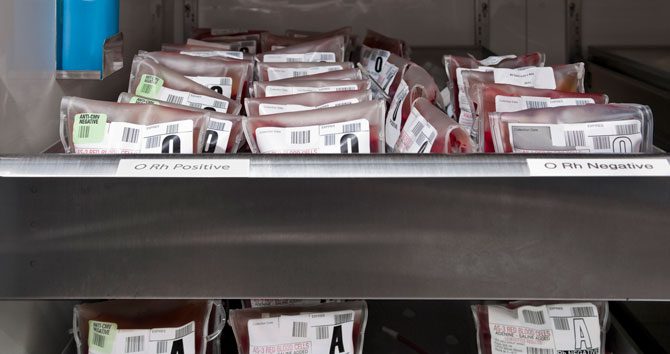You’re probably already using a barcode strategy to track blood donations throughout your processes and understand the value barcode labels offer when it comes to tracking and sample safety. But, did you know there are more ways you can add value to your processes through labeling? Here are a few ways you can improve overall efficiencies and integrity through blood labeling.
1. Utilize a DIN replicator to reduce waste and costs
An efficient system minimizes waste and extraneous costs, a DIN replicator can help you achieve both of these things. A DIN replicator is essentially a specially programmed scan and print system designed to scan and reprint exact replicas of DIN barcodes from an existing set—and only barcodes from your existing sets. Replicator tools can help you reduce waste and unnecessary spend by allowing you to eliminate labels from your set that frequently go unused, and instead print labels for vials and paperwork as needed. Having a replicator on hand also ensures you have enough labels on hand in the instance a mistake needs correction.
2. Add color to your labels for at-a-glance identification
It can be extremely helpful to have a second set of checks and balances in place, and one way to do that is by incorporating an at-a-glance identification system.
This not only improves operational efficiency but also contributes to a more organized and error-resistant workflow.
Adding a colored element to labels that correspond with a designated end location, source location, or other pertinent information can provide operators with an easy opportunity to ensure each unit has been properly allocated &/or directed.
3. Improve tracking and scanning with RFID
Some organizations are future-proofing their identification strategies through the utilization of hybrid RFID-barcodes. This combined strategy enables organizations to continue to use existing infrastructure utilizing barcode technology, while at the same time leverage the benefits of RFID technology. Adopting RFID in terms of a hybrid means less disruption to workflows while the technology is learned and integrated.
In the long run, adding a secondary label, or hybrid label for consistency or adopting a secondary tracking technology ensures a future-proofed system that will result in fewer errors, more accurate data output, improved sample safety and efficiencies.
If your collection facility is looking to improve efficiencies consider the above solutions. No one solution is going to work for everyone, so think about which option, or combination of options is best suited to meet your needs. Many facilities benefit from a combined strategy that caters to multiple opportunities for improvement, while others might find a boost in a single area to be effective enough. Either way, consider your current practices and start looking for opportunities to boost efficiencies in your labeling strategy today!
